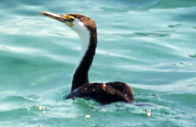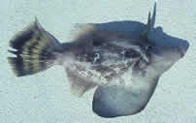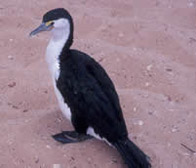
Research Projects – Cormorants

Cormorants

bouts

pied cormorants


Pied cormorants are the most common bird that we see foraging in the bay. These birds often dive to the bottom to catch small fish in and around the seagrass, but they sometimes form large flocks that feed on large schools of fish near the surface. Usually, we see cormorants foraging alone - when two birds are close together the one that doesn't catch a fish will try to steal the fish of the bird that was successful. A common catch for the cormorants are leatherjackets which are slow-moving fish with a large spine on their heads. When the cormorants are finished fishing for the day, they fly to rest on the sandy beaches of Shark Bay or fly to the nesting areas found in the relatively rare mangrove habitats.
Cormorants are eaten by tiger sharks. This means that, like dugongs, dolphins, sea turtles and sea snakes, cormorants have to balance foraging with staying safe from sharks. Since 1997, we have been studying how cormorant habitat use is influenced by where their food is found and where tiger sharks are. Using data on cormorant prey from fish traps and our studies of tiger shark habitat use we have been able to determine what areas have the most food (shallow seagrass beds) and which are most dangerous (shallow seagrass beds). Using counts from passes along our transects in deep and shallow habitats, we found that cormorants prefer to forage in shallow habitats where there are more fish. They even stay over seagrass and avoid sand patches because there are more fish, like leatherjackets, in the seagrass. Even though there are always more prey for cormorants in the shallows, the birds reduce their use of shallow banks as tiger shark abundance increases in the study area. This is because the tiger sharks prefer to spend their time hunting in these shallow seagrass beds. Those cormorants that accept the risks and forage in shallow habitats when tiger sharks are around are almost always found in the middle of the banks - where tiger sharks are less commonly encountered - instead of along bank edges where tiger sharks are most abundant. When the sharks are gone, the birds are distributed evenly between edges and bank interiors. Our studies of cormorant use of bank edges and interiors, in combination with studies of dugongs and dolphins, have shown us that the decisions that each species makes about where to forage are dependent on their escape abilities. Click here to learn more about how escape behavior can modify habitat use decisions by prey.
We recently completed a studu investigating whether tiger sharks might influence the diving behavior of pied cormorants. We found that cormorants change the time they spend at the surface after a dive as the danger from tiger sharks increases, but they only make this change in the microhabitat that is most dangerous for them (edges of banks).
Cormant Studies Publications
- Dunphy-Daly, M. M., M. R. Heithaus, A. J. Wirsing, J. S. F. Maradon, and D. A. Burkholder. 2010. Predation risk influences the diving behavior of a marine mesopredator. Open Ecology Journal 3: 8-15
- Heithaus, M. R., A. J. Wirsing, D. Burkholder, J. Thomson, and L. M. Dill. 2009. Towards a predictive framework for predator risk effects: the interaction of landscape features and prey escape tactics. Journal of Animal Ecology 78: 556-562.
- Heithaus, M. R. 2005. Habitat use and group size of pied cormorants (Phalacrocorax varius) in a sea grass ecosystem: possible effects of food abundance and predation risk. Marine Biology 147: 27-35.
All photographs copyrighted; Images may be used for educational purposes. For use in other forms contact Mike Heithaus

